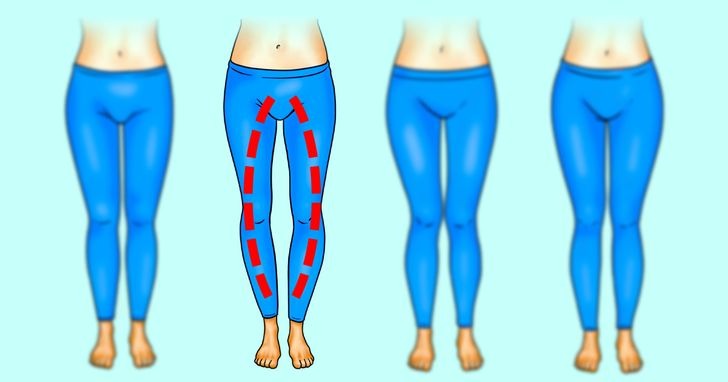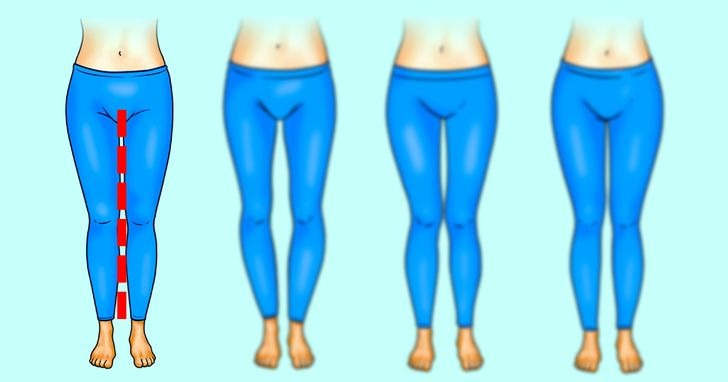When people talk about posture, most of the focus goes to the back—straighten your spine, pull back your shoulders, stand tall. But there’s another major player in your body’s alignment story… and it’s been silently supporting you your whole life:
Your legs.
Your leg alignment does more than just determine how you walk. It can reveal hidden imbalances, predict future joint problems, and even point to underlying medical conditions. So if your knees feel off, or your gait isn’t smooth, your legs might be trying to tell you something important.
Let’s break down the four most common types of leg alignment, what they mean, and why it matters.

1. Neutral Alignment – The Gold Standard
In an ideal world, your hips, knees, and ankles should stack in a perfect line. This is called neutral alignment, and it’s the posture most physical therapists aim to preserve or restore.
Visual Clues:
-
Knees and ankles touch naturally
-
Legs look straight from front and side
-
No visible bowing or inward curves
Why it matters:
This alignment evenly distributes body weight, reducing stress on the joints and lowering your risk of arthritis and injury.
2. Genu Varum – The “Bowleg” Condition
Bowlegs—technically known as genu varum—make the knees stay wide apart when the ankles are together. The legs curve outward, creating a noticeable arch.
What causes it?
-
Completely normal in toddlers under 2
-
Vitamin D deficiency (rickets)
-
Blount’s disease or other bone disorders
-
Arthritis (especially in older adults)

What to watch for:
-
Uneven wear on knees
-
Altered walking pattern
-
Increased risk of knee degeneration
3. Genu Valgum – Knock Knees
The opposite of bowlegs, knock knees (or genu valgum) cause the knees to touch while the ankles stay apart. The legs angle inward, forming a V shape.
Common causes:
-
Genetic traits
-
Obesity in children
-
Past injuries affecting bone growth
-
Nutritional or developmental issues
Red flags:
-
Knee pain or “giving out”
-
Risk of early-onset arthritis
-
Balance problems, especially in active kids
4. Windswept Deformity – The Hidden Warning Sign
This rare and unusual alignment is exactly what it sounds like: one leg bows outward (varum), while the other angles inward (valgum). The result? A dramatically uneven stance.
Often linked to:
-
Cerebral palsy
-
Skeletal dysplasias
-
Congenital or neuromuscular conditions
Why it matters:
Windswept deformity isn’t just about leg shape. It may signal deeper developmental or neurological disorders. Prompt diagnosis is crucial, and treatment can include bracing, therapy, or even surgery.

So… Why Should You Care About Leg Alignment?
It’s not just about how your legs look. Poor leg alignment can:
-
Accelerate knee and hip degeneration
-
Cause chronic pain in the lower back
-
Increase risk of sports injuries
-
Lead to arthritis due to uneven cartilage wear
And if these problems show up in children, they can worsen quickly during growth spurts.
How Is It Diagnosed?
If something seems off, don’t just rely on “Dr. Google.” Visit a medical professional for:
-
Gait analysis (how you walk)
-
X-rays
-
Postural assessments
What Are the Treatment Options?
Fortunately, many alignment issues can be corrected—or at least managed—with the right support.
Treatment may include:
-
Customized physical therapy and exercises
-
Orthotics or leg braces
-
Nutritional support (especially vitamin D and calcium)
-
Surgery, but only when necessary
Final Thoughts: Your Legs Don’t Lie
Leg alignment is more than a cosmetic concern—it’s a window into your long-term mobility and health. From straight, neutral legs to bowlegs, knock knees, or windswept deformities, your legs could be whispering a warning… or shouting for help.
Listen early. Act early.
Because small shifts in posture today can make a huge difference in how you walk, run, and move tomorrow.